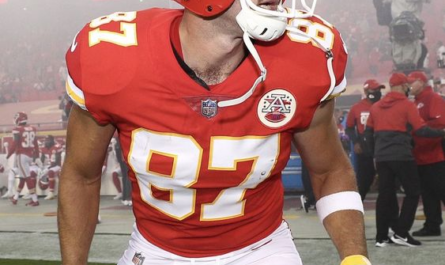Aaron Rodgers’ Journey to NFL Stardom
[bg_collapse view=”button-orange” color=”#4a4949″ expand_text=”Show More” collapse_text=”Show Less” ]
Aaron Rodgers has established himself as one of the greatest quarterbacks in NFL history during his illustrious career with the Green Bay Packers. However, his path to superstardom was not without its challenges. Rodgers had to overcome being drafted in the shadow of a legend, spending years in a backup role, facing early criticism as a starter, battling injuries, and developing as a leader on and off the field. Through it all, Rodgers’ work ethic, dedication to improvement, and resilience have defined his story and allowed him to reach the pinnacle of his profession.
Drafted in the Shadow of a Legend
Coming out of the University of California, Berkeley as the No. 1 quarterback prospect in the 2005 NFL Draft, Rodgers expected to be one of the first players selected. However, the Packers already had a future Hall of Famer under center in Brett Favre. As a result, Green Bay passed on Rodgers with the 24th overall pick, instead selecting him with the 24th selection.
Being drafted behind Favre was far from ideal for Rodgers’ development. Favre was still playing at an elite level for the Packers and showed no signs of slowing down or retiring. This meant Rodgers was destined for a backup role for the foreseeable future. He would have to patiently wait for what seemed like an improbable opportunity to start over a legend.
The situation understandably raised questions about Rodgers’ patience and motivation. Would he be content riding the bench for years? Would being stuck behind Favre stunt his growth or cause him to lose his edge? Rodgers acknowledged the less than ideal circumstances but was determined to make the most of the opportunity. “You can look at it as a negative situation or you can look at it as a positive situation to learn from one of the all-time greats,” Rodgers said.
Overcoming the Backup Role
Rather than sulking on the sidelines or causing locker room issues, Rodgers embraced his backup role. He paid close attention during practices and games, soaking up as much as he could from observing Favre’s work ethic, preparation, and on-field play. Rodgers spent hours breaking down film, focusing on the mental and technical aspects of playing the position.
In practice, Rodgers didn’t just go through the motions. He competed with the starters and pushed Favre during drills. This helped Rodgers stay sharp and ready in case an opportunity arose during games. His dedication to improvement was evident, as Rodgers noticeably elevated his game each season despite limited reps.
Packers coaches and teammates were impressed by Rodgers’ professionalism and work ethic in his backup role. General manager Ted Thompson said Rodgers “didn’t miss a beat” in his preparation despite not playing. Wide receiver Donald Driver praised Rodgers for being “locked in” at all times. This attitude would prove crucial when Rodgers finally got his chance to start.
Early Struggles and Doubts
The opportunity came in 2008 when Favre retired (only to later attempt an unretirement). Rodgers became the Packers’ new starter and showed promise, leading Green Bay to a 6-10 record. But in his first season as the full-time starter, Rodgers also displayed his rawness. He completed just 60.3% of his passes and threw as many interceptions as touchdowns.
Critics pointed to Rodgers’ accuracy and decision-making as areas needing improvement. Some fans remained skeptical that Rodgers was the long-term answer and questioned if he was truly capable of replacing Favre. Rodgers acknowledged the learning curve, saying “It’s always an adjustment going from being a backup to being the guy.” He faced pressure to silence the doubters in his second season.
Focus on Improvement
Rodgers responded to the criticism and doubts by dedicating himself to improvement. He worked extensively with quarterbacks coach Tom Clements to refine his footwork, throwing mechanics, and reads. Rodgers studied film of the league’s top passers like Peyton Manning and Tom Brady to incorporate elements of their techniques.
In the 2009 offseason, Rodgers put an emphasis on getting stronger in the weight room. This helped him withstand hits and throw with more velocity and accuracy. He also spent time with sports psychologist Don Kalkstein to sharpen his mental approach and decision-making process. The extra work paid off immediately, as Rodgers took a massive leap in his second season.
Rodgers completed nearly 67% of his passes and led the league with a 103.2 quarterback rating in 2009. He cut down on turnovers while increasing his touchdowns. Most importantly, Rodgers helped guide the Packers to an 11-5 record and playoff appearance. His transformation from year one to year two silenced any lingering doubts about his ability to be a franchise quarterback. Rodgers’ dedication to self-improvement has remained a hallmark of his career.
Developing Leadership
While Rodgers was always a natural talent on the field, early in his career he was not viewed as the vocal, rah-rah type of leader. As the starting quarterback, Rodgers knew he needed to step into that leadership role both on and off the field. He began actively mentoring younger players and worked on being more vocal during practices and games.
Rodgers also took steps to bond with his teammates outside of football. He organized team outings and dinners to build chemistry and trust. Over time, Rodgers developed a commanding yet approachable leadership style. His teammates respected that Rodgers led by example with his tireless work ethic and dedication to winning. They also saw his commitment to their development and success.
By the time the Packers won Super Bowl XLV in 2010, there was no doubt Rodgers was the unquestioned leader of the team. He was directing players pre-snap and celebrating their accomplishments. Rodgers’ evolution into a strong leader helped propel the Packers to sustained success and cemented his status as the face of the franchise. His leadership has been vital to Green Bay’s championship caliber teams.
Overcoming Injuries
While Rodgers has enjoyed terrific health for much of his career, injuries have still posed challenges at times. In 2013, Rodgers broke his left collarbone on a hit by Bears linebacker Shea McClellin in a Monday night game. The injury required surgery and sidelined Rodgers for over half the season. It was the first significant injury of Rodgers’ career.
His most serious injury occurred in 2017 when Rodgers again broke the same collarbone, this time on the right side, against the Vikings. The injury was even more severe, requiring a second surgery and keeping Rodgers out for seven games. It was a major setback, as Rodgers was playing at an MVP level before the injury occurred. Both times, Rodgers’ resilience would be tested in his recovery and return to the field.
Resilience and Returning Stronger
Rodgers’ work ethic and competitive drive fueled his recoveries from injury. He approached rehab with the same intensity as his on-field preparation. Rodgers spent countless hours strengthening his shoulders, core, and overall fitness level to return better than before. Both times following collarbone injuries, Rodgers came back midseason and played some of the best football of his career down the stretch.
In 2013, Rodgers led the Packers to a wild card berth after returning and played almost flawlessly. He showed no lingering effects of the injury. In 2017, Rodgers came back and guided the Packers to a 3-1 record over the final month. His play helped Green Bay clinch a playoff spot. Rodgers has repeatedly demonstrated an ability to overcome adversity and use setbacks as motivation to reach new heights. His mental and physical toughness has defined his legacy as one of the NFL’s all-time great competitors.
A Future Hall of Famer
By overcoming the challenges of being drafted behind Favre, developing patience as a backup, responding to early criticism, continually refining his game, evolving as a leader, and battling back from injuries, Aaron Rodgers has cemented his status as one of the NFL’s all-time elite passers. He is a Super Bowl champion, two-time league MVP, and owns countless franchise and NFL records. Rodgers’ combination of talent, dedication to improvement, and resilience in the face of adversity serves as an inspiration for any player or person facing obstacles. His story shows that through hard work and determination, greatness can be achieved regardless of initial circumstances. When his playing career concludes, Aaron Rodgers will undoubtedly take his place among the legends of the game in the Pro Football Hall of Fame.
[/bg_collapse]



